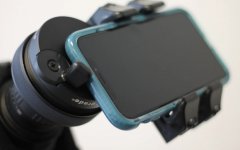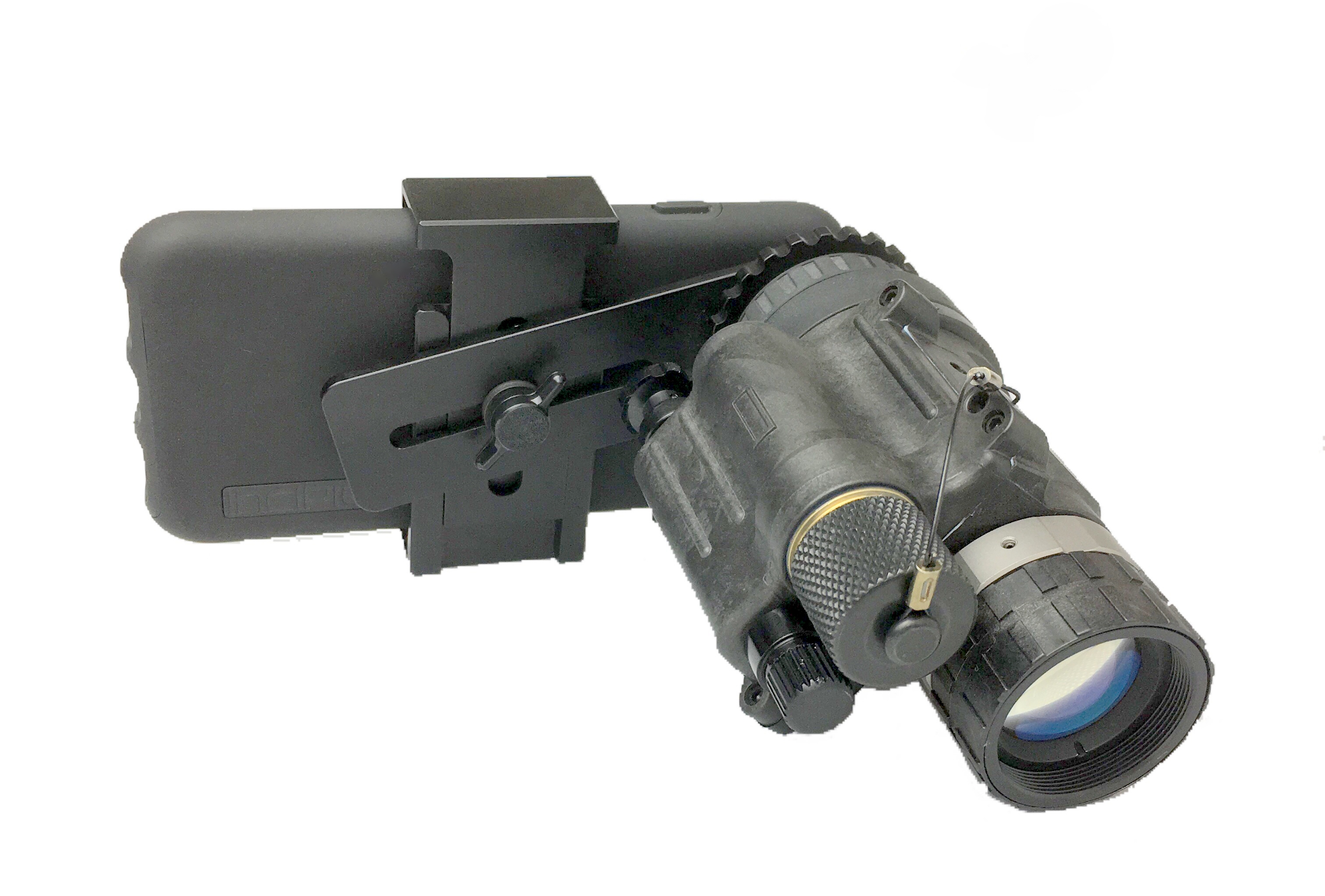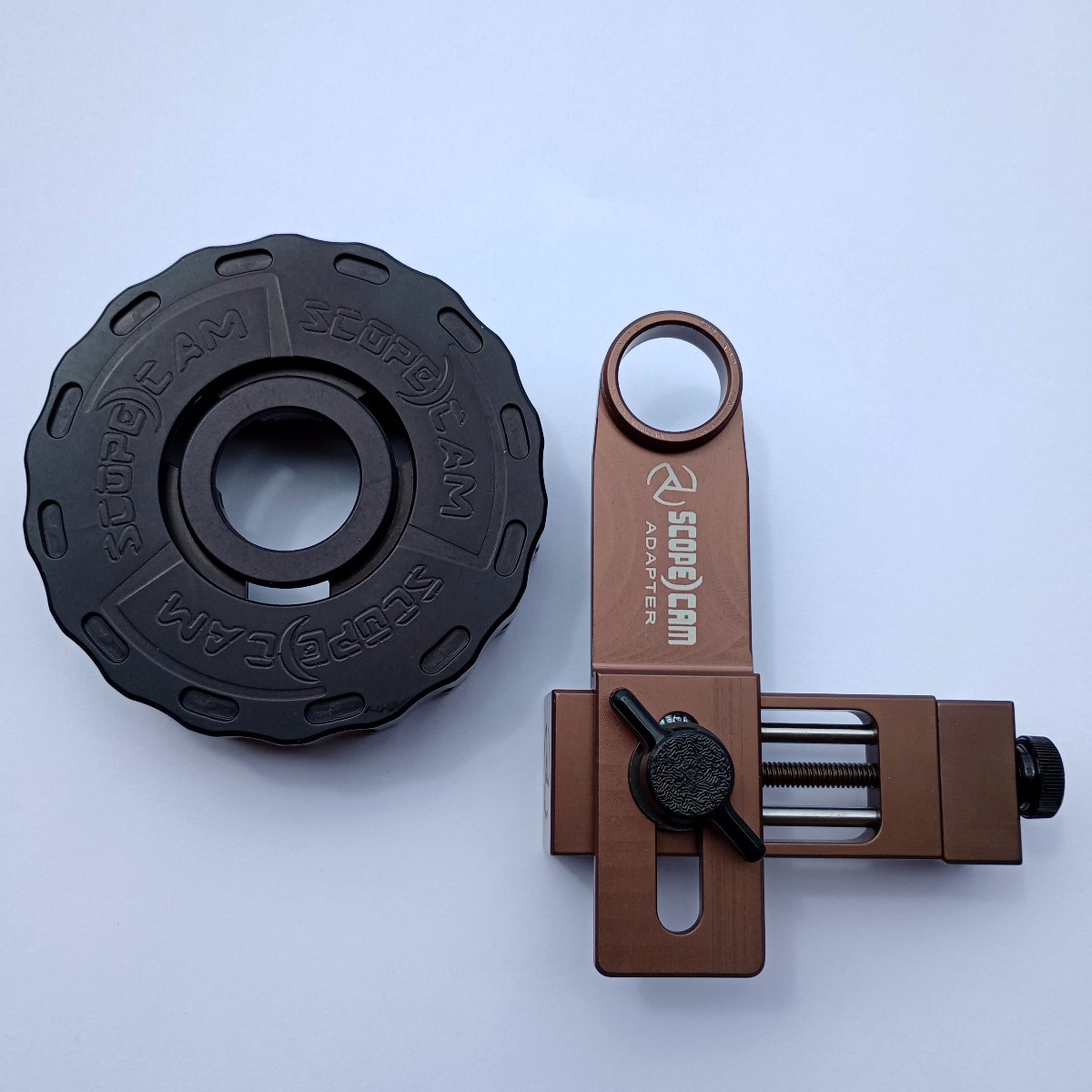So a lack of reviews about digiscoping with a phone and spotter (or binos) that uses both a critical eye AND are thorough led me to collect, organize, and write up this info.
I have no biz or personal relationship with any of these fine upstanding manufacturers.
I have hands-on experience with two of the units discussed below, and have done fairly exhaustive research (including phone calls with biz owners and reps, reading reviews, and of course pouring over videos). But I expect I am wrong somewhere (let me know!) and I’m treating this as a living document.
My purpose & use
I have a iPhone 13 pro max and a Vortex Razor 27x-60x85mm spotting scope. I want to leave an adapter on the scope to be able to quickly snap my phone in. I also want to have it set up so the horizon is level each time I snap the phone in (no readjusting after the initial setup). It is a given that I would level the tripod beforehand.
I have Leica 15x LRF binos co-witnessed (if that’s the correct word) with the spotter so once I find a prairie dog in the binos, the little bugger magically appears upon the phone screen. Saves a ton of time!
Notice the spotter is rotated left 45°. That’s so one can use the binos to scan for targets and range, make one turn of their head, and quickly and easily see the phone screen. I don’t have my Phone Cam adapter on the scope because I’m using my phone to take this pic.

How the phone attaches in landscape mode in my setup
What’s the problem, man?
So, I’ve used the Novagrade (not great, thought it was going to be, but ultimately not for me) and the Phone Cam. The Phone Cam, while much better (remember, for me) had some issues in my little, tiny world.
The problem was making sure that the gripping portion (a 3-jaw chuck, basically) of the adapter grips at the angle at which you want it to (a two-hand job).
It’s at the last little throw at the end of the tightening where it’s very easy to misalign the phone + adapter to the horizon. It’s due to the adjustable eyecup of the spotter, which rotates a little as you tighten the adapter. Grrrrr.
Additionally, doing this with the spotter rotated to 45° messes with one’s internal “level”. The result is a horizon that is distractingly off. (And I’m not looking for perfection!)
“Ah!” you might say. “Just attach it when the spotter is rotated to 0°!” Well if the spotter is at 0° one has to attach the phone at a 135° angle to ultimately get a level horizon in landscape mode after you rotate the spotter left-45°.
Totally natural! (nope) You getting what I’m laying down, bruh?
Recap: I have four things going on that makes it harder to quickly achieve a level horizon: 1) the before-mentioned 45° spotter rotation that throws off one’s natural “level,” 2) landscape mode which accentuates the effect of gravity when attaching the phone (droop), 3) using the Phone Cam is a two-hand job, and 4) the spotter's eyecup, by its very design, twists and screws you up.
Criteria Used
Examples of using an angled spotter rotated left/right at 45°:
“I don’t like this review because…”
You’ll notice I don’t address extreme compactness, weight, straight spotter use, astronomy use (iPhone Lidar messes with image but see this fix and to a lesser extent, this), cost, universality, and infinite other factors that you, gentle reader, might care about. But hopefully this overview/comparison gives you a starting point to make your own list.
A side note about cost, since cheapsters abound:
So, for me, a relatively low price (~$200) isn’t really a constraint once I factor in:
I have no biz or personal relationship with any of these fine upstanding manufacturers.
I have hands-on experience with two of the units discussed below, and have done fairly exhaustive research (including phone calls with biz owners and reps, reading reviews, and of course pouring over videos). But I expect I am wrong somewhere (let me know!) and I’m treating this as a living document.
My purpose & use
I have a iPhone 13 pro max and a Vortex Razor 27x-60x85mm spotting scope. I want to leave an adapter on the scope to be able to quickly snap my phone in. I also want to have it set up so the horizon is level each time I snap the phone in (no readjusting after the initial setup). It is a given that I would level the tripod beforehand.
I have Leica 15x LRF binos co-witnessed (if that’s the correct word) with the spotter so once I find a prairie dog in the binos, the little bugger magically appears upon the phone screen. Saves a ton of time!
Notice the spotter is rotated left 45°. That’s so one can use the binos to scan for targets and range, make one turn of their head, and quickly and easily see the phone screen. I don’t have my Phone Cam adapter on the scope because I’m using my phone to take this pic.
How the phone attaches in landscape mode in my setup
What’s the problem, man?
So, I’ve used the Novagrade (not great, thought it was going to be, but ultimately not for me) and the Phone Cam. The Phone Cam, while much better (remember, for me) had some issues in my little, tiny world.
The problem was making sure that the gripping portion (a 3-jaw chuck, basically) of the adapter grips at the angle at which you want it to (a two-hand job).
It’s at the last little throw at the end of the tightening where it’s very easy to misalign the phone + adapter to the horizon. It’s due to the adjustable eyecup of the spotter, which rotates a little as you tighten the adapter. Grrrrr.
Additionally, doing this with the spotter rotated to 45° messes with one’s internal “level”. The result is a horizon that is distractingly off. (And I’m not looking for perfection!)
“Ah!” you might say. “Just attach it when the spotter is rotated to 0°!” Well if the spotter is at 0° one has to attach the phone at a 135° angle to ultimately get a level horizon in landscape mode after you rotate the spotter left-45°.
Totally natural! (nope) You getting what I’m laying down, bruh?
Recap: I have four things going on that makes it harder to quickly achieve a level horizon: 1) the before-mentioned 45° spotter rotation that throws off one’s natural “level,” 2) landscape mode which accentuates the effect of gravity when attaching the phone (droop), 3) using the Phone Cam is a two-hand job, and 4) the spotter's eyecup, by its very design, twists and screws you up.
Criteria Used
- Very very very fast to attach to spotter. Like sub one-second.
- The optical alignment, ideally, must be bang on with no fiddling. In reality I could tolerate two seconds of fiddling but no more.
- If using a case, must allow phone to ride in case at all times (pocket, car, etc)
- Phone + case must fit in a cargo pants leg pocket (at least)
- Must be indexable to a pre-set specific angle near instantly. See reality bit above.
- Does not slip on angled spotter, especially one rotated at 45°
- Does not block any physical camera function. In reality I could maybe not have access to the wide-angle lens, but…ouch.
- Doesn’t affect GPS/compass on the spotter on or off. Reality: might accept interference while on the spotter.
- Must work with my Hondo Garage phone car mount, which is the best most solid mount ever for off-road use, in my humble opinion
- Nice to have:
- would be awesome if eyepiece adapter allowed indexed angles of at every 45°. Examples below.
- non-eyeglass scratching eyepiece that allows use without phone attached to spotter
- ability to use factory or third-party eyepiece cap
- doesn’t interfere with a hat
- doesn’t interfere with wireless charging
- if there’s a protruding bit on the case, it will be small-ish
Examples of using an angled spotter rotated left/right at 45°:
- in a truck with spotter attached to window—spotter must be rotated left at 45° (too tall to use at 0°)
- spotting down/up on a steep slope without drastically changing tripod height
- my weirdo use detailed above, etc.
- left-45° spotter rotation: needs phone at 135°
- right-45° spotter rotation: needs phone at 225°
“I don’t like this review because…”
You’ll notice I don’t address extreme compactness, weight, straight spotter use, astronomy use (iPhone Lidar messes with image but see this fix and to a lesser extent, this), cost, universality, and infinite other factors that you, gentle reader, might care about. But hopefully this overview/comparison gives you a starting point to make your own list.
A side note about cost, since cheapsters abound:
So, for me, a relatively low price (~$200) isn’t really a constraint once I factor in:
- gas to get to the prairie dog fields
- tons of ammo
- pricy optics and rangefinders
- 4-5 rifles
- cost of the darn phone
- etc
- my one good long vacation a year doing something I really enjoy, and honoring memories with my son/my friends by preserving in memorandum our many various prairie dog explosions and cackling BLAMMO all the way home ho ho ho (now I’m Santa Claus)
Last edited:








